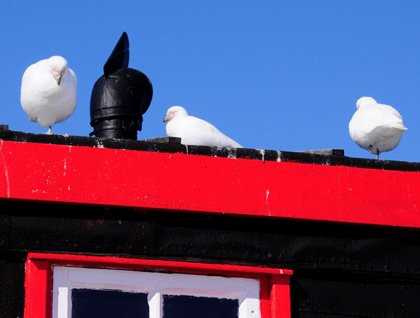After yesterday’s excitement at Palmer Station, our last landing of the expedition this morning would seem tame. Port Lockroy is only a few miles away but was built in a different era by a different country. World War II was a time of claiming ground all over the world. In response to perceived German threats in Antarctica, the British began building bases along the peninsula (which the British claimed). Base “A” would later be called Port Lockroy. It is now a gift shop and post office which supports the British Antarctica Heritage Trust, which is either removing or has refurbished some of the other structures previously built along the Antarctic Peninsula.
One of the charismatic fauna that resides here is the snowy sheathbill. While penguins of different detail all receive the lion’s share of the press in Antarctica, something has to clean up after them. That is the sheathbill’s job. How they are able to maintain the pristine look to their white feathers while consuming the most fowl substances found is unknown. They nest here at Port Lockroy and rely on the penguins for most of their food. They are fearless and curious, good adaptations for making their living. They are not a seabird, not having webbed feet, but somehow make their way across the Drake Passage during the summer season to keep the penguin colonies in neat order even while the slovenly penguins are doing their best job at mucking the place.







